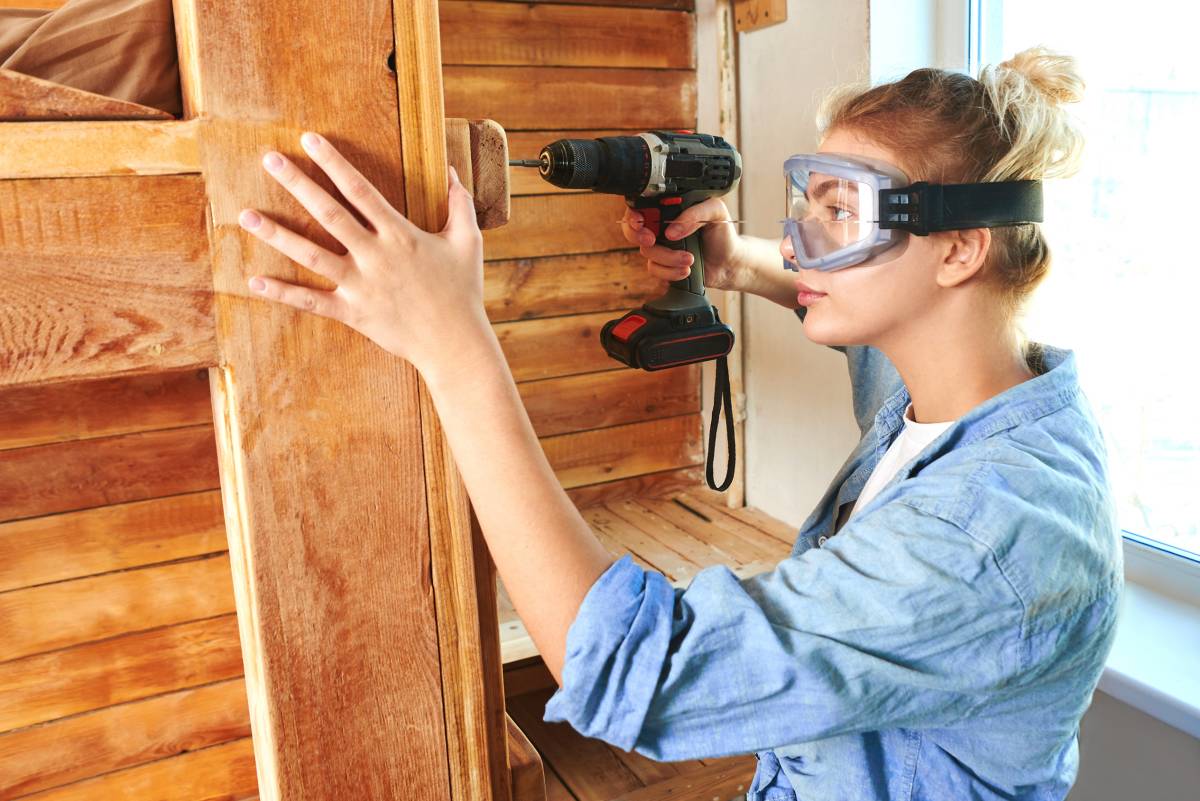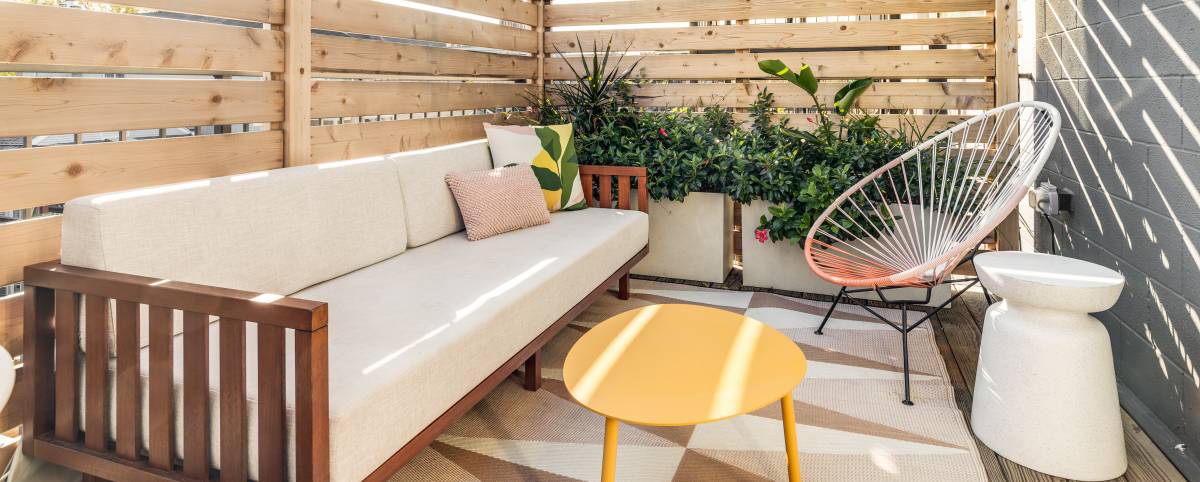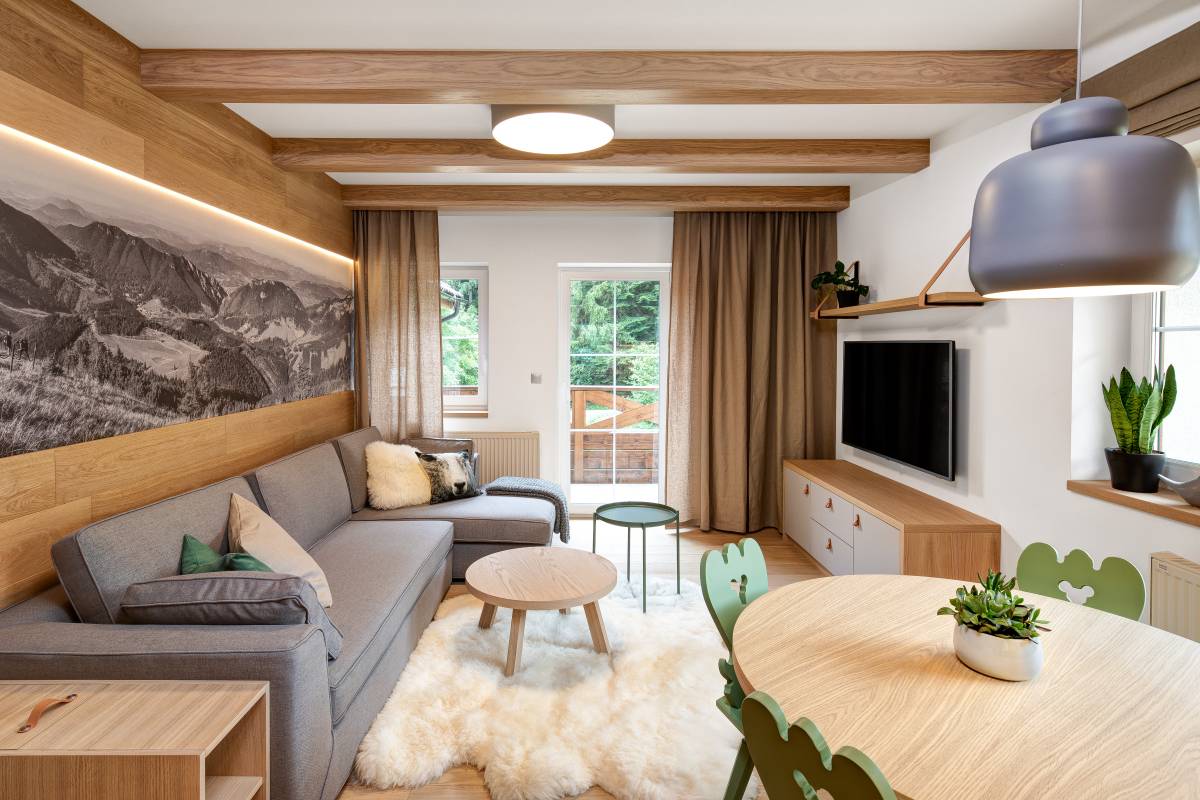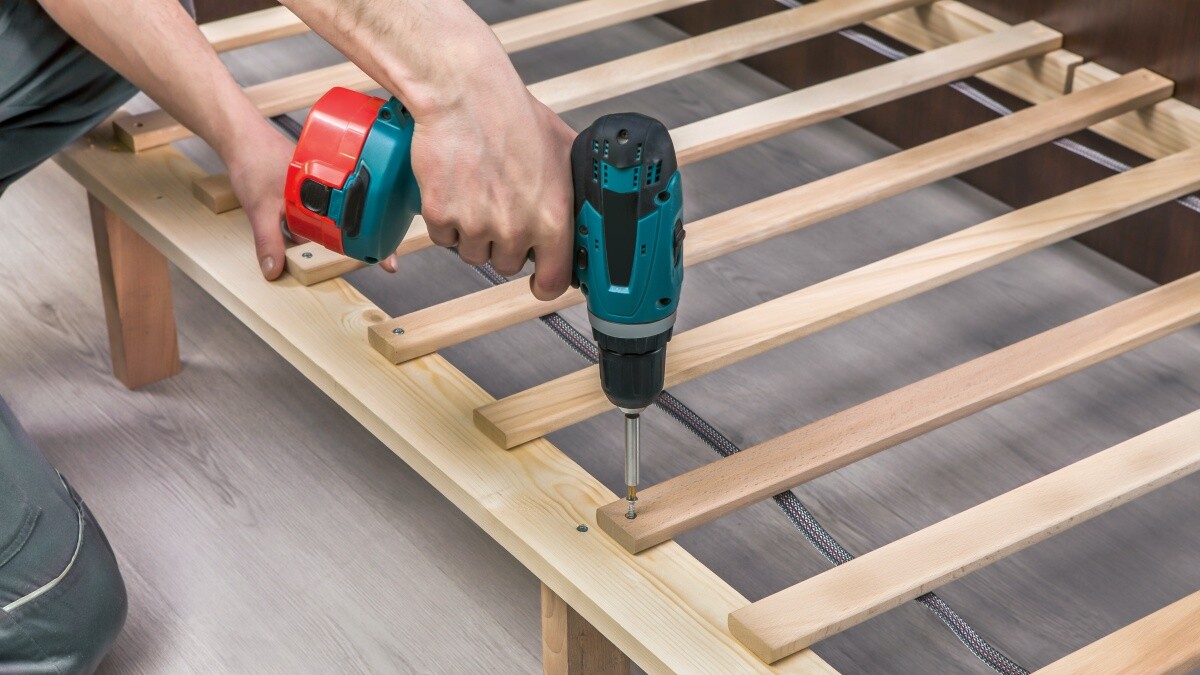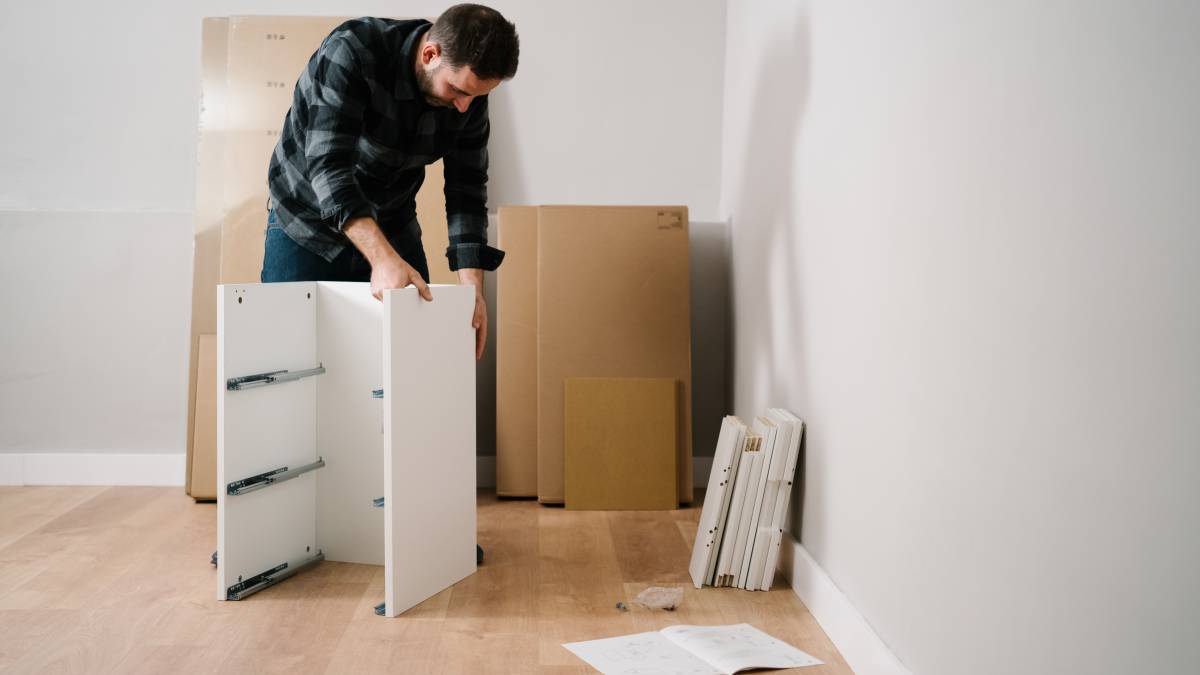- Home/
- Comparisons/
- Furniture Assembly/
- Bassinet vs Cot

Bassinet vs cot: Which is the right choice for your baby?
Comparing bassinets and cots based on their size, safety features, assembly process, and more.
Hire an expert assemblerPublished on
Key Facts
A bassinet is a small and portable sleeping basket for newborn babies. It usually has a flat mattress, breathable mesh walls, and soothing features to ensure your baby’s comfort.
A cot is a versatile bed designed for newborns and toddlers. It is convertible, has adjustable height levels, and has safety features such as slats and side barriers.
Establishing good sleep patterns is paramount to a child’s growth and well-being. So, when shopping for newborn beds, it is essential to choose something safe and comfortable for your baby to sleep on.
But what do newborn babies sleep in? It can either be a portable bassinet or a classic cot. Choosing which between the two can be a challenge for first-time parents since both are designed to provide a safe sleep environment for babies.
This guide covers all aspects of bassinets vs cots, helping parents make an informed decision when shopping for newborn beds.
What is a bassinet?
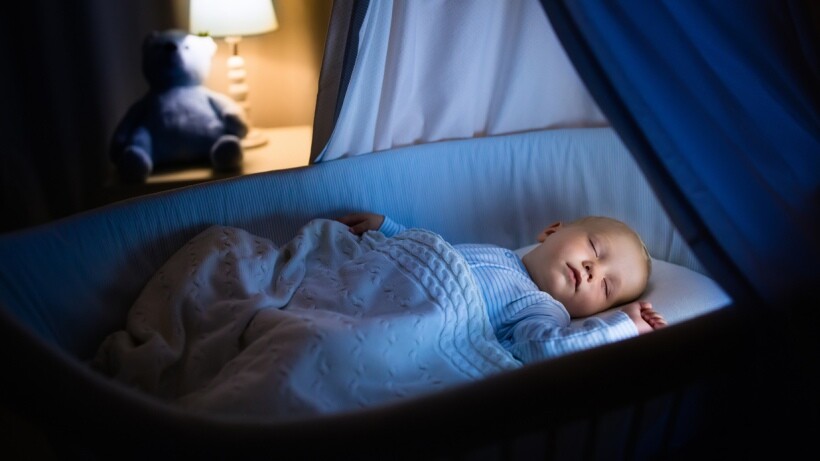
A bassinet is a small newborn sleeping basket with a firm, flat mattress. Its portable design allows parents to keep their babies in the same room for closer monitoring and easier feeding. This is convenient for new mothers who are still recovering from childbirth or have undergone a C-section and are experiencing postpartum fatigue.
Purchasing a bassinet for your baby can help soothe them. Some models even have a built-in feature that mimics the motion or sounds of the womb. Moreover, bassinets have breathable mesh walls, keeping babies fresh and comfortable while sleeping.
What is a cot?
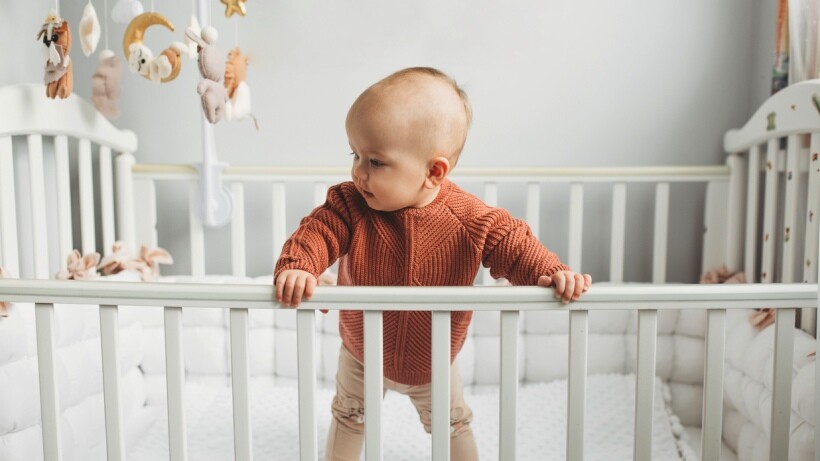
A cot is a bed with a dual purpose. It’s designed for newborn babies, but you may also use it as a bed for toddlers because it has a convertible design. Moreover, cots keep babies and toddlers safe, as they typically have a durable frame with slats and high-side barriers. These safety features prevent them from falling out of bed.
Like bassinets, cots are also beneficial for mothers postpartum since most models have adjustable mattress heights. This makes it easier to pick up or lay your baby down.
Cot vs bassinet: What are their key differences?
Since babies spend most of their time sleeping, bassinets and cots should be placed at the top of your baby essentials list when shopping and building your nursery. Make shopping less overwhelming with this detailed comparison guide. It covers all the factors that highlight the advantages and disadvantages of cots and bassinets.
In terms of the recommended age range
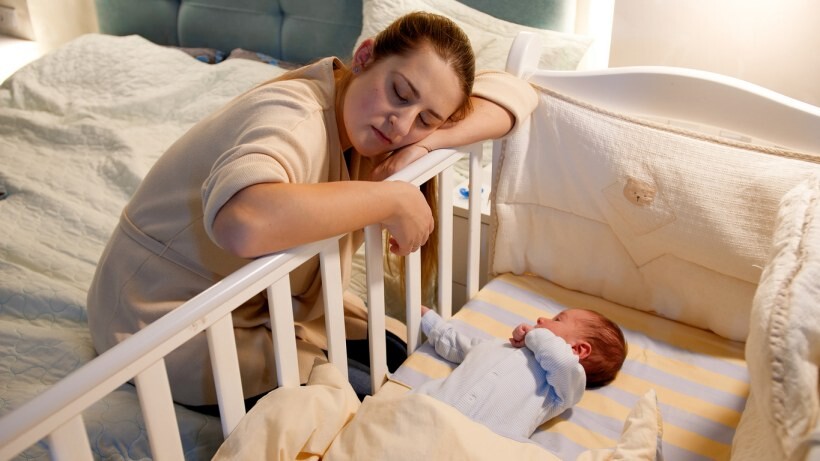
Getting a bassinet for newborns is ideal, as the recommended age range for this type of baby bed is 4 to 6 months. However, you should transition your baby to a cot past the six-month mark. Most babies can now roll over or push up on their knees and legs at this stage, and the petite frame of bassinets makes it unsafe to continue using past this age.
On the other hand, the recommended age range for cots is more comprehensive because you may use it from your baby’s newborn stages until they reach 3 to 4 years old. This is because cots have a more stable frame and are equipped with convertible features.
In terms of size
Since you may only use a bassinet during your baby’s early months, they’re typically smaller and more compact than cots. However, their sizes can vary widely, with most bassinets having a mattress size of 26 to 30 inches long and 14 to 16 inches wide.
Due to their compact design, bassinets are perfect for homeowners living in small apartments with limited room space. Plus, you may fit the bassinet right next to your bed, so you can easily comfort and feed your baby during the wee hours of the night.
In contrast, cots are larger than bassinets, with most full-size cribs having a standard size of 53 inches long and 28 inches wide. Since they can take up more space, they’re best for homeowners with larger bedrooms.
In terms of portability
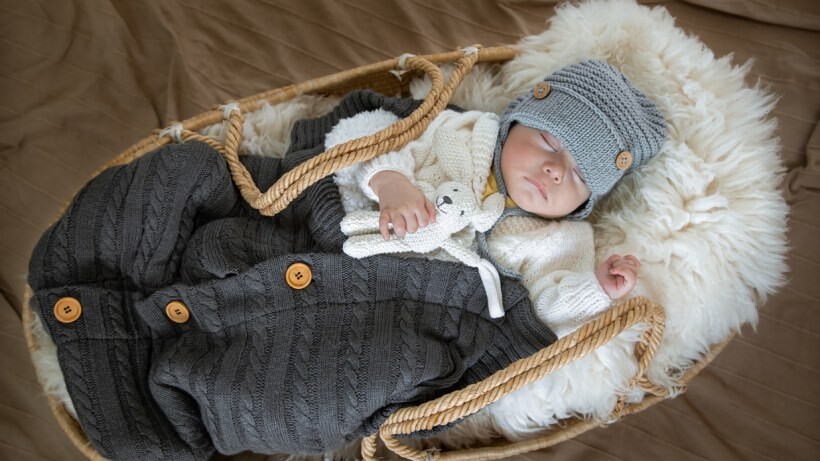
Aside from being compact, bassinets are also lightweight. You can even find basket bassinets or Moses baskets made from light, natural materials like wicker and palm leaves.
Additionally, these basket bassinets are designed with soft padding and a handle that is perfect for travelling. Some bassinets even have a folded-down feature, making them convenient during overnight trips.
Even though some modern cots have travel-light features like carrying cots, they still have bulkier dimensions and more complex setup requirements than bassinets. For this reason, cots aren’t ideal for travelling.
In terms of safety features
As parents, you probably heard about cot death or Sudden Infant Death Syndrome (SIDS) and how it can happen during the earliest months of an infant. Fortunately, SIDS is rare, and there are many ways you can prevent it. You can hire a maternity nurse who can assist with baby care, and follow safe sleep practices like preventing loose bedding for a newborn.
Choosing a baby bed with safety features can also lower the risk of SIDS. Cots are generally safer than bassinets because manufacturers are required to adhere to and meet strict safety cot standards. Moreover, cots have a more robust and stable frame, reducing the risk of babies tipping over. You’ll also find that most cots have higher sides and a more close environment than bassinets.
In terms of assembly and disassembly

Bassinets are easier to assemble and disassemble due to their compact size and fewer parts. Plus, some bassinets have a one-step, open-and-fold system, so you can conveniently move them around.
However, you may still need to check and ensure the bassinet is safe and stable. There could be exposed sharp edges or small parts that can injure your baby. For this reason, it’s best to seek professional help when assembling and disassembling any baby furniture.
Meanwhile, cots have a more robust and complex assembly and disassembly process because these are meant for long-term use. Not to mention, most have convertible features. So, even if it’s a simple cot from IKEA, hiring an expert to assemble your IKEA furniture is a must to ensure precise measurements and avoid accidental collapses.
In terms of cost
Bassinets are more affordable upfront, ranging from £20 to £300. This is because bassinets have smaller sizes and lighter materials compared to cots. However, bassinets are less cost-effective since they’re only suitable during the baby’s early months.
Meanwhile, cots with convertible features are more expensive, ranging from £400 to £600. Despite the high initial costs, cots are worth investing in because you may transform them into toddler beds as your baby grows.
Hire a Tasker for bassinet and cot assembly
As parents, your baby’s safety is your number one priority. Hire furniture assembly services at Airtasker to ensure all the baby bed parts are securely fastened. They have experts with experience in assembling and disassembling various bassinet and cot models, so you can fully utilise even the hidden functionalities of your chosen baby bed.
Bassinet vs cot
| Bassinet |
Cot | |
| Recommended Age Range |
4 to 6 months |
Newborn stages to 3 to 4 years old |
| Size |
Smaller, typically 26 to 30 inches long and 14 to 16 inches wide |
Larger, standard size of 53 inches long and 28 inches wide |
| Portability |
Lightweight and compact, suitable for travel |
Bulkier and less portable, not ideal for travel |
Safety Features |
Less safe with lower sides |
Safer with a more robust design and enclosed environment |
| Assembly and Disassembly |
Easier due to compact size and fewer parts |
More complex assembly due to convertible features |
| Cost |
More affordable upfront |
More expensive upfront, but more cost-effective |
FAQs on bassinets and cots
A crib is a common term for small baby beds used in North America, while a cot is commonly used in nations that use British English, like Australia and New Zealand. Moreover, cots typically have a larger size than cribs.
If you already have a cot, you don’t need to buy a bassinet anymore because cots are designed for newborn babies to use until they reach their toddler years. Moreover, you can buy a travel cot with a bassinet, so you don’t necessarily have to buy a separate bassinet.
The choice between a cot and a Moses basket depends on the available space and your preference since both are suitable bed options that provide a cosy and confined place for newborn babies.
For newborns, avoid using pillows and duvets since these can suffocate them while sleeping. You should use a fitted sheet, breathable blanks or a baby sleeping bag instead.
Find furniture assemblers, fast
Post a task
Related articles

Learn how to build a DIY bookcase
Read more

Creative wall shelving ideas
Read more
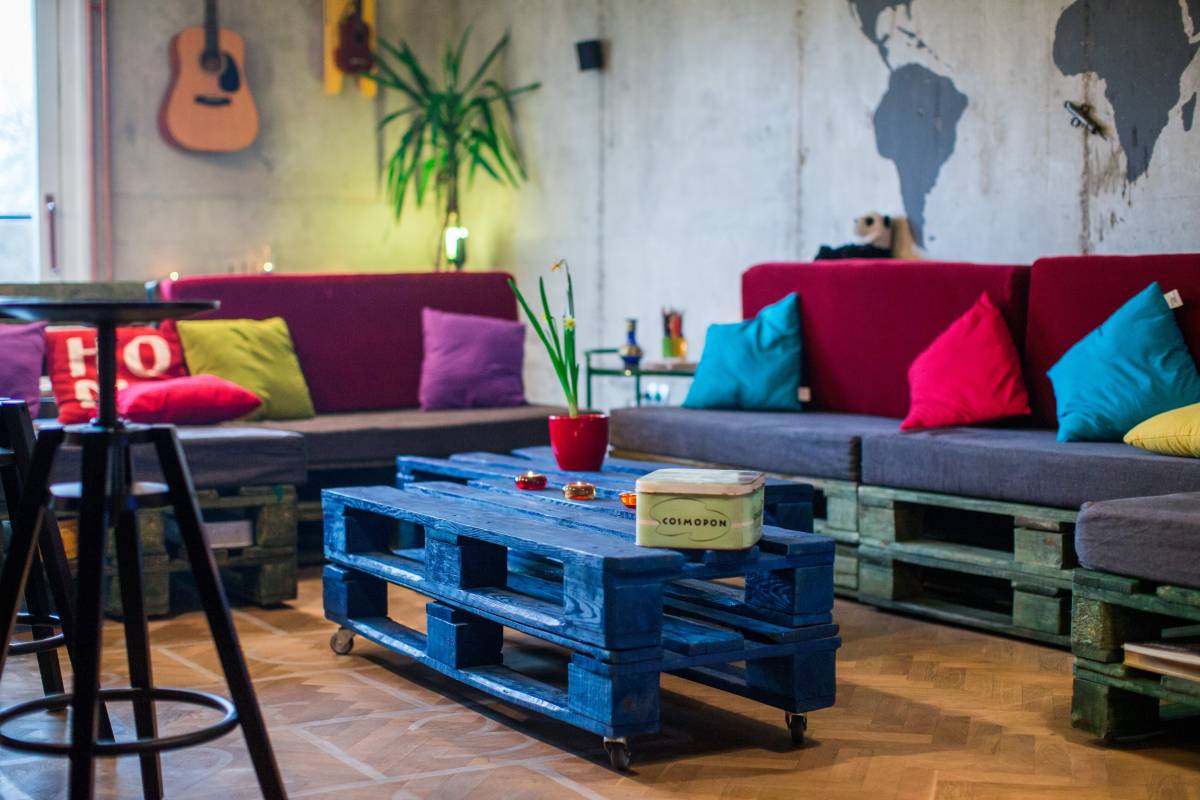
15 Must-try pallet furniture ideas
Read more
Related price pages


